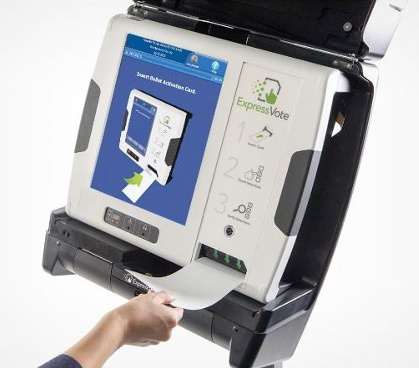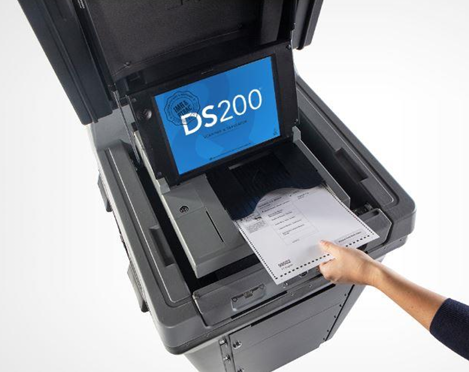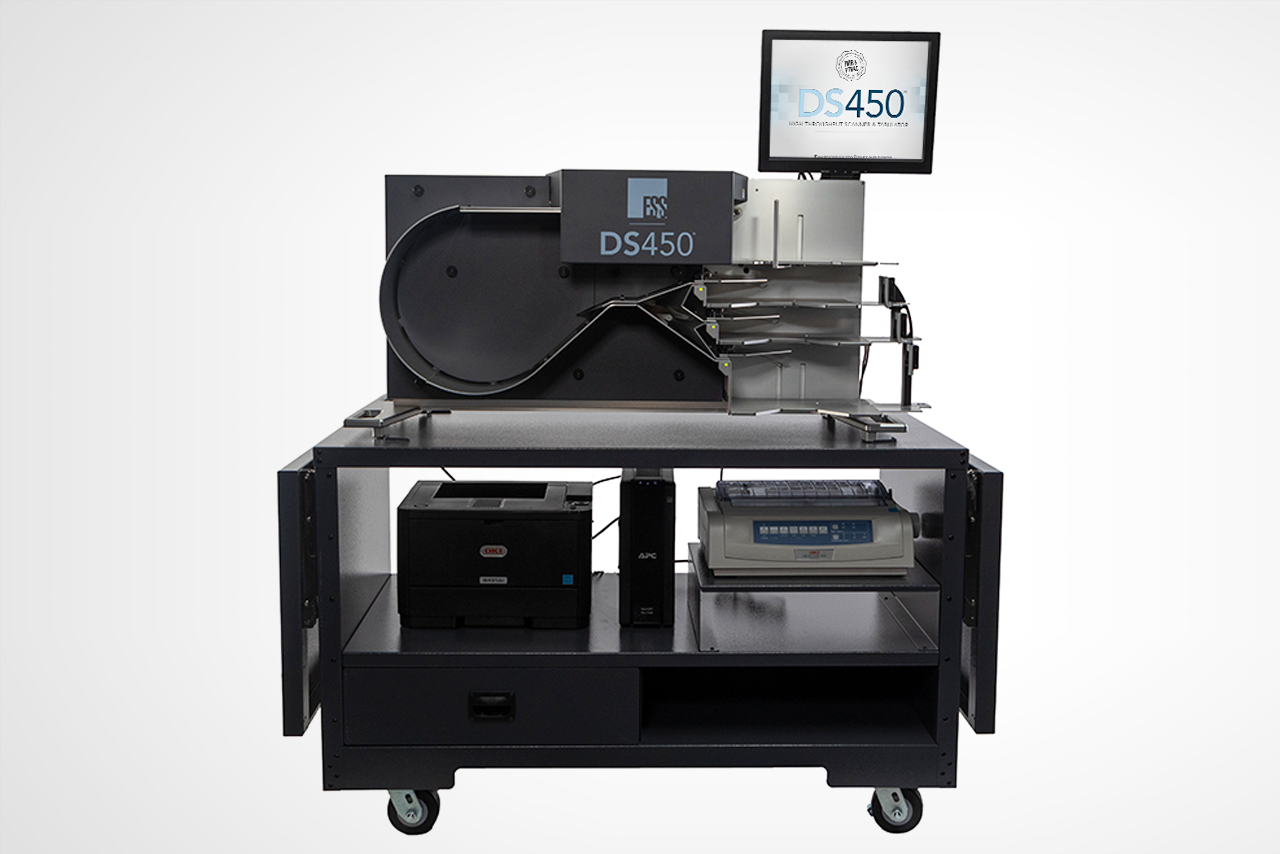The Secretary of State approves voting systems and provides guidance on processes for use in North Dakota elections. North Dakota has a centralized voting system which means the same equipment is used across all 53 counties for statewide elections.
- Election equipment is extensively tested under federal standards by experts in election technology and practices.
- All equipment is certified by the Federal Election Assistance Commission (EAC) and the North Dakota Secretary of State.
- North Dakota has testing requirements in law for both pre- and post-election for accuracy.
The following equipment and resources are used in North Dakota election administration (NDCC § 16.1-06).
PollPads, also known as electronic pollbooks, are used only to check-in voters at polling locations.
- PollPads read data from a voter’s ID and verify that information against the Central Voter File.
- PollPads are connected through a secure, private network to every other PollPad used in North Dakota’s elections. Once a voter checks in at one polling location, statewide every other polling place’s PollPads are updated with this information. This prevents voters from voting more than one time per election.
- PollPads are tested extensively before each election.
Manufacturer: KNOWiNK, Inc.
FACT: Strong ID requirements and the use of PollPads are the state’s best prevention against anyone voting more than once an election.
North Dakota is the only state without voter registration as our Voter ID Law requires a valid form of ID to vote. Election officials verify IDs against the Central Voter File, also known as the voter record, to ensure residents are qualified to vote.
The Central Voter File is directly linked to identification data at the North Dakota Department of Transportation and is:
- Updated continuously with any changes made to your identification information.
- Updated for deaths and incarcerations due to felony.
- Monitored for security threats by both state and federal agencies as part of election
Different ID Styles, Types, & Citizenship
Identification issued by the North Dakota Department of Transportation comes in many different styles and statuses, many of which are used for voting. Certain types of IDs are issued to non-U.S. citizens and the Central Voter File flags anyone marked as a non-citizen so election officials can ensure only U.S. citizens are allowed to vote. Learn more about Voter ID.
North Dakota only uses paper ballots for voting. All votes cast and counted are on paper ballots.
There are two styles of ballots in use:
- Traditional Paper Ballot - voter receives paper ballot and then marks ballot by filling in ovals with a pen.
- ExpressVote Paper Ballot Card - voter uses accessible touch screen to mark ballot and then prints paper ballot card.
Both traditional paper ballots and ExpressVote paper ballot cards are cast and counted in the DS200 Ballot Tabulator. Election officials store ballots for 22 months post-election and may audit or recount ballots, if a recount is required.
For more information visit Voting in North Dakota.
FACT: North Dakota only uses paper ballots for voting. All votes cast and counted are on paper ballots.
 Each polling site has at least one ExpressVote assistive ballot marking device. Ballot marking devices are an electronic device that provides voters, including voters with disabilities, the ability to mark their ballot privately and independently.
Each polling site has at least one ExpressVote assistive ballot marking device. Ballot marking devices are an electronic device that provides voters, including voters with disabilities, the ability to mark their ballot privately and independently.
Accessibility features that can be used by voters include:
- Larger font sizes
- Having ballot read aloud
- Ability to use devices like headphones, switches, etc.
- Contrast settings
- Ability to blank screen for privacy
Facts about the ExpressVote
- Any qualified voter can use the ExpressVote.
- Voter marks ballot by touch screen.
- Prints a paper ballot card.
- Voter can review choices on paper ballot before it is inserted into the ballot tabulator.
- Eliminates unclear marks, overvotes, and crossover votes.
- Not connected to the internet and has no components for such connection.
Manufacturer: Election Systems & Software
The DS200 is a ballot scanning device that tabulates paper ballots marked by hand or by the Express Vote ballot marking device at the polling site. Ballot tabulators are a reliable and accurate way of efficiently counting ballots. Ballot tabulators are part of the comprehensive procedures that North Dakota has in place to verify election results.
Facts about the DS200
- Traditional paper ballots and ExpressVote paper ballot cards are deposited in it for counting.
- Not connected to the internet and has no components for such a connection.
- Tested extensively before each election with 100% accuracy.
- Post election audits conducted in each county to ensure 100% accuracy.
Manufacturer: Election Systems & Software
FACT: Ballot handling machines are not connected to the internet and contain no components for such a connection.
The DS450 is the high-speed ballot tabulator used in each county for ballots cast by absentee voters. All ballots are tabulated in the presence of a bipartisan election board. The DS450 may also be used as a tabulator post-election if a contest is within recount margins for recounting a specific contest.
Facts about the DS450
- Traditional paper ballots cast by absentee voters are deposited in it for counting.
- Not connected to the internet and has no components for such a connection.
- Tested extensively before each election with 100% accuracy.
Manufacturer: Election Systems & Software
FACT: Ballot handling machines are not connected to the internet and contain no components for such a connection.
Election Equipment Videos
The DS200 Ballot Tabulator is used to count ballots at all polling locations.
The ExpressVote assistive ballot marking device can be used by any voter.



